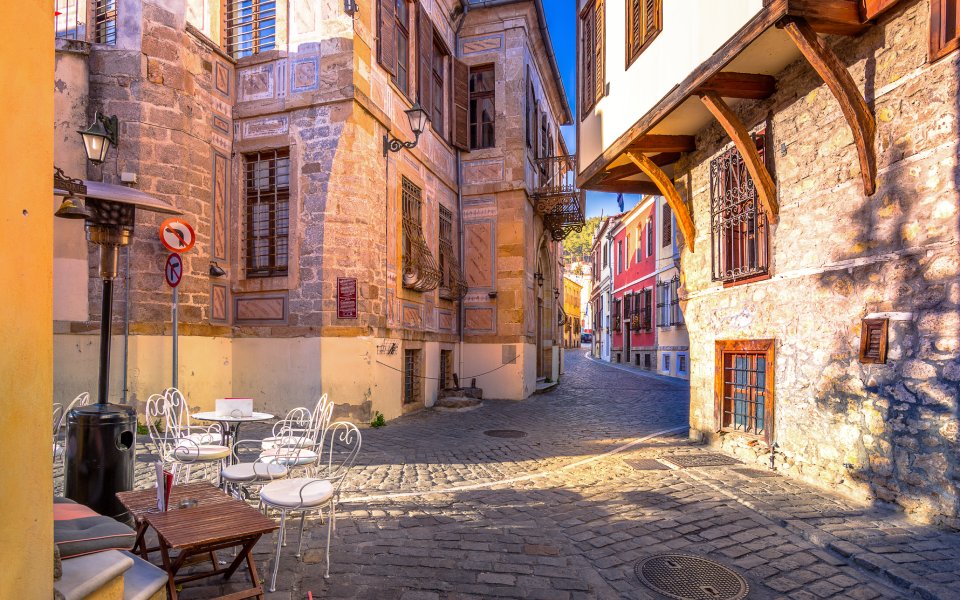During the pandemic, the only way to get out and about was through the Street View of Google Maps. Wandering around the towns of Greece was possible only with the click of a mouse or a finger scroll on the smartphone. What was interesting though was exploring the topography of the cities and towns; historical centers with dense clusters of old buildings and roof tiles and the rest of the city with modern-looking blocks of flats. The beauty of those centers define the city’s identity and history throughout the centuries.
We have highlighted the most important landmarks of 10 Old Towns in Greece, in case you visit them in person:
Xanthi, Thrace
During the Ottoman Empire, the town of Xanthi was a crossroads for merchants. The town gained fame and prosperity thanks to its tobacco cultivation. The majority of the town’s bourgeoise built their mansions on a hill close to Cosinthos River, while the workers and the visitors from Greece, Bulgaria and Ottoman Empire established themselves around the town’s bazaar.
Years after the gradual decay of the tobacco business, those mansions formed the Old Town of Xanthi. Birthplace of famous composer and intellectual Manos Hadjidakis, since 1991, the area hosts an artistic festival every September and thanks to its mayor, Filippos Amoiridis (1943-1999), the whole town of Xanthi has regained its once-vanished glory.
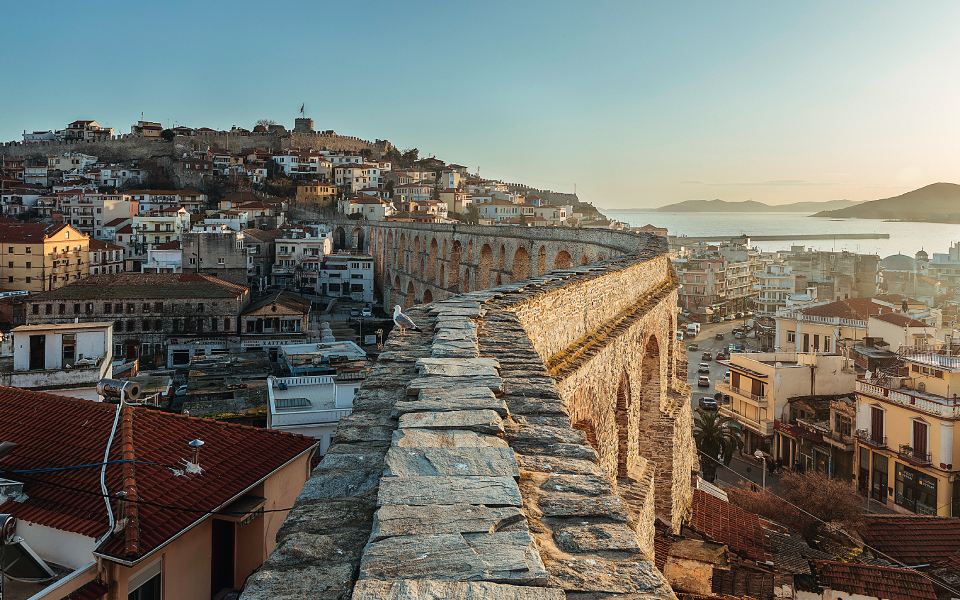
© Nicholas Mastoras
Kavala, Eastern Macedonia
Just before the famous Roman aqueduct “Kamares” (arches) – one of Kavala’s most conspicuous landmarks – there is a steep hill that leads you to the Old Town. Called “Panagia (Virgin Mary)” because of the homonymous church that in 15th century was a convent, the Old Town of Kavala is built on a mountainous peninsula that can be seen from the whole western seaside of the city.
Aside from the spectacular Byzantine Fortress overlooking the town, nowadays a theater and concert venue, the Imaret madrassa (religious school) is one of the most exquisite examples of 19th century Islamic architecture. The residence of Muhammad Ali of Egypt, now a museum, and, in the cape of the Old Town, where the school and the famous lighthouse lie, you can climb down to the rocks and enjoy the sea breeze and sunset.
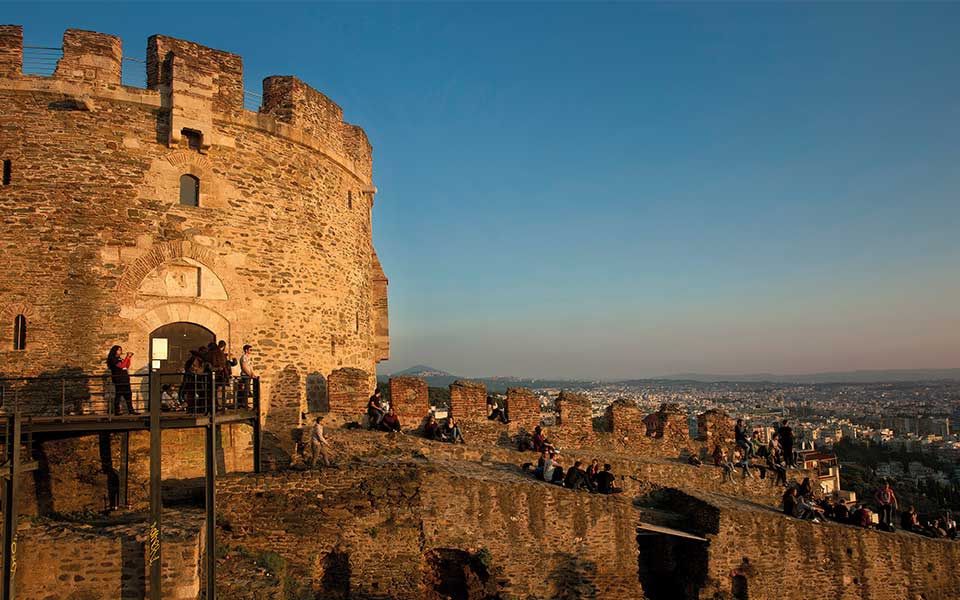
© Alexandros Avramidis
Thessaloniki, Central Macedonia
Between the city centre of Thessaloniki and the acropolis hill and Heptapyrgion Fort, the Ano Poli (Upper Town) neighbourhood offers a look of how was the city during Byzantine and Ottoman Era. Thanks to its well-preserved city design of those eras, which stayed untouched from the Great Fire of 1917, the area was a hub for the city’s intellectuals and bohemians.
Quiet, peaceful, and without cars congesting its small alleys, the Upper Town is the perfect place to explore the city’s secrets and find respite from the hustle and bustle of the center’s main roads. If the pandemic hadn’t struck, at the end of August you could have sat in the stairs of Vasilis Tsitsanis’ Square with the city’s youth and listen to the live orchestra that pays tribute the legendary songwriter.
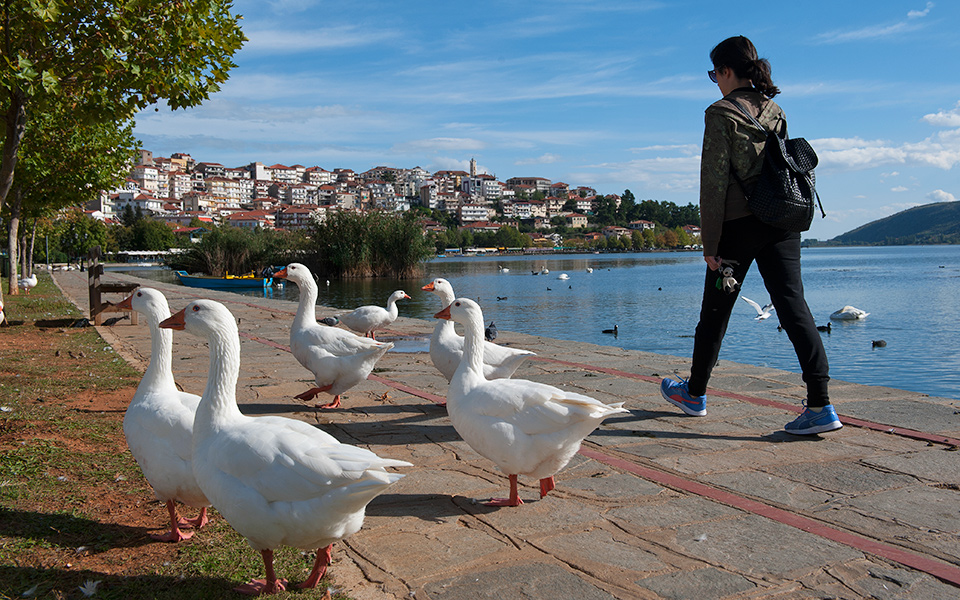
© Alexandros Avramides
Kastoria, Western Macedonia
Alongside Ioannina, Kastoria is the other famous lakeside town in northern Greece. Well-known for its feather processing and merchandise, Kastoria’s old mansions in the Doltso district bore witnesses to the once-flourishing economy of the 17th and 18th centuries. Many of those mansions have been converted into municipal museums, while in the Apozari neighbourhood you can admire the unique Macedonian architecture and some Byzantine-era churches.
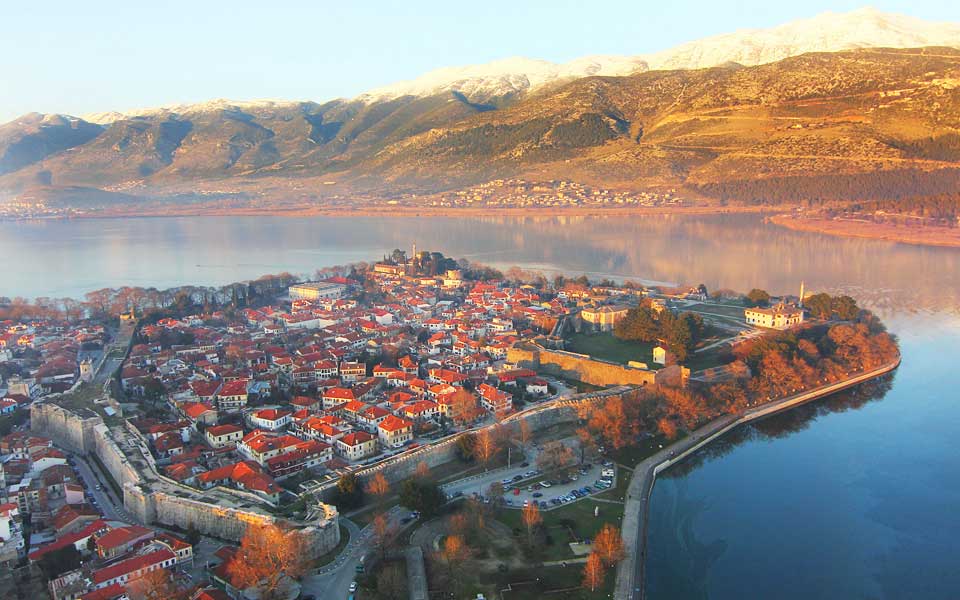
© Chrysostomos Fountas
Ioannina, Epirus
In Epirus, northwest Greece, the city Ioannina is inextricably linked to Lake Pamvotida. A bicycle ride along the shores of the lake will take you to the walls of Ioannina Castle, where lie hidden the deep secrets of the Ottoman and Jewish history and the legends of Ali Pasha, the one time Ottoman ruler of the city.
In the small alleys where cars are not allowed and outside the traditional Epirot homes, you will discover the southeastern citadel of Its Kale, the Ottoman Baths (Hammam), the magnificent Aslan Pasha Mosque that houses the Ethnographic Museum of the city and the Fethiye Mosque, built during the 34 years of Ali Pasha’s rule. Apart from the castles, the arcades of Anexartisias Street reveal the once-flourishing Jewish stores of the city.
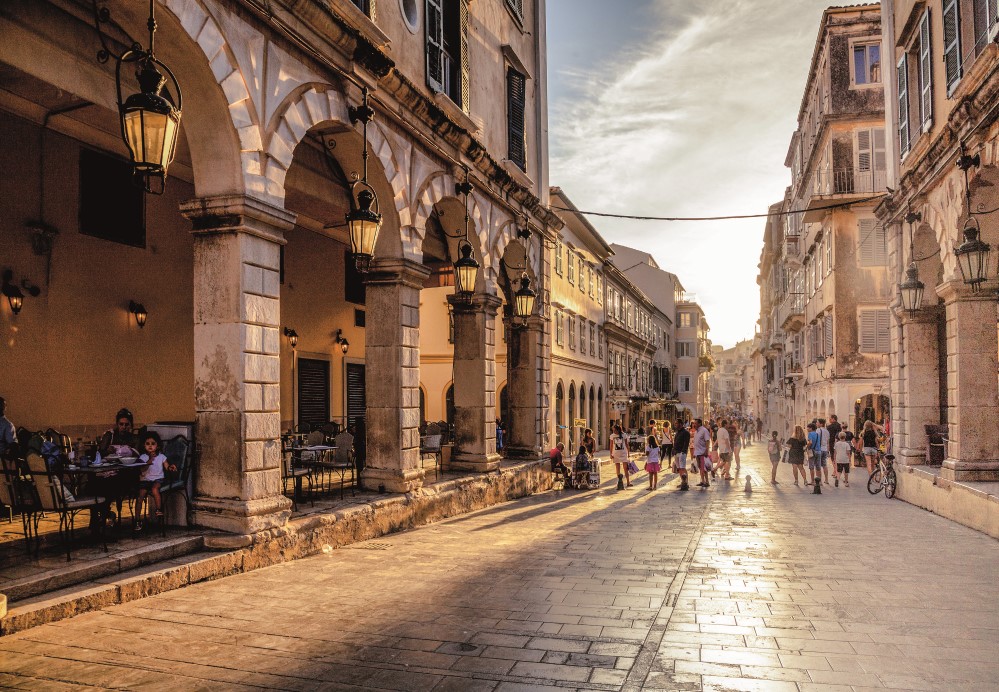
© Visualhellas.gr
Corfu, Ionian Islands
Old Town of Corfu is a jewel of Byzantine and Venetian architecture. Located between the two Venetian Castles, the narrow alleys paved with cobblestones called “kantounia,” the arches in Liston esplanade and its bistro, its unique churches, such as St. Spyridon Cathedral, the city’s patron saint, and its densely-clustered buildings made by stone and handmade roof tiles captivate visitors from all over the world.
In 2007, the old town of Corfu was inscribed on the UNESCO World Heritage List.
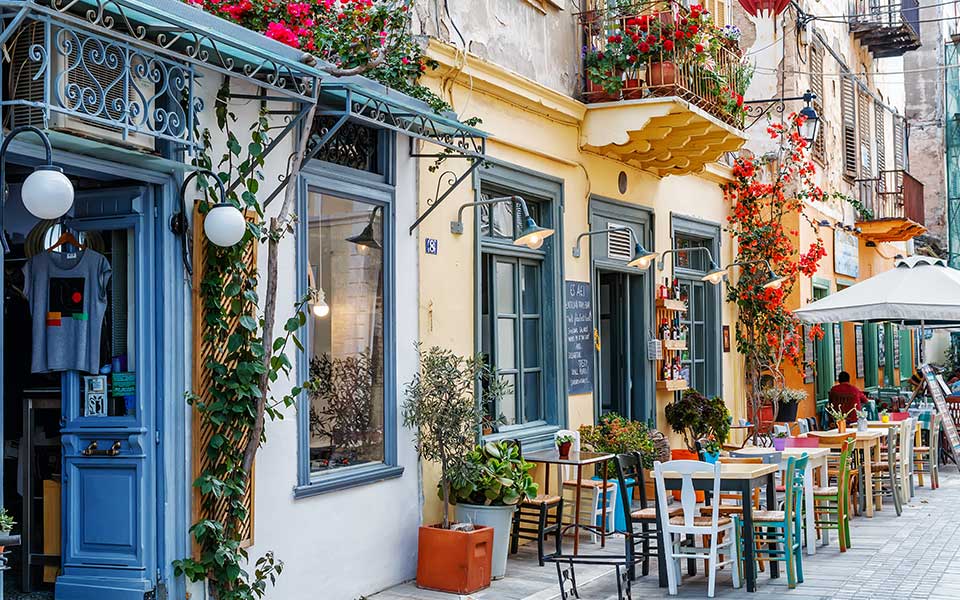
© Shutterstock
Nafplio, Peloponnese
The first capital of the Modern Greek state is built on a small peninsula jutting into the Argolic Gulf. Under the fortifications of Acronafplia and Palamidi, the architecture of the Old Town is based on local stone, red roof tiles and shuttered wooden windows. Mixed Venetian and Ottoman buildings compile a unique scenery with the paved pathways that lead to Syntagma Square and its great sycamore tree.
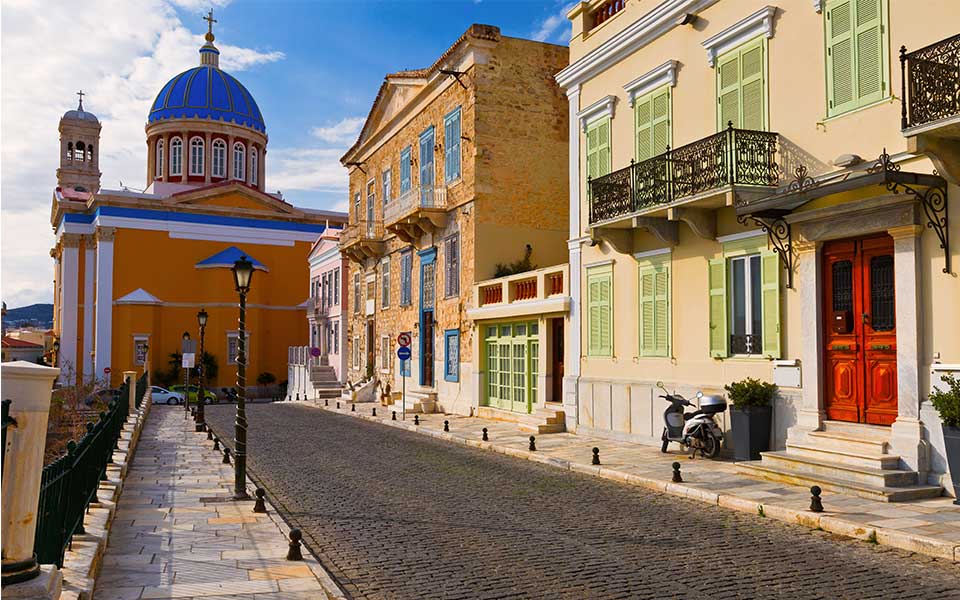
© Shutterstock
Ermoupolis, Cyclades
Before Ermoupolis was shaped in its current form, the core of Syros Island in the Cyclades was the medieval settlement of Ano Syros (Upper Syros). During the Greek Revolution in the 1820s, refugees from other Greek Islands found shelter there. As Ano Syros is far from the port, the first refugees founded Ermoupoli as an extension of Ano Syros.
Following the Revolution, merchants, bankers and shipbrokers revived the island with their commercial activity. Their mansions and the neoclassical buildings they funded, along with the prosperous municipality, shaped the Old Town of Ermoupolis. Apollo Theater, famous for the staging of Italian operas, Ermoupolis City Hall, designed by the renowned architect Ernst Ziller, and the Church of St. Nicholas are among the main trademarks of the Old Town.

© Stylianos Papardelas
Hania, Crete
On the eastern side of Crete, where the second biggest city of the island is located, Hania offers one of the most picturesque Old Towns that you can wander around. Long arched pathways and Venetian palazzi in Topanas quarter, exquisite architecture – signs of Hania’s settlers and conquerors – traditional food and drink and Cretan hospitality under the trees of Splantzia Square, the flea and farmer’s market in the Municipal Market and sunset walks around the Venetian Harbor and Firkas Fortress are only some of the charms that the labyrinthine alleys have to offer.
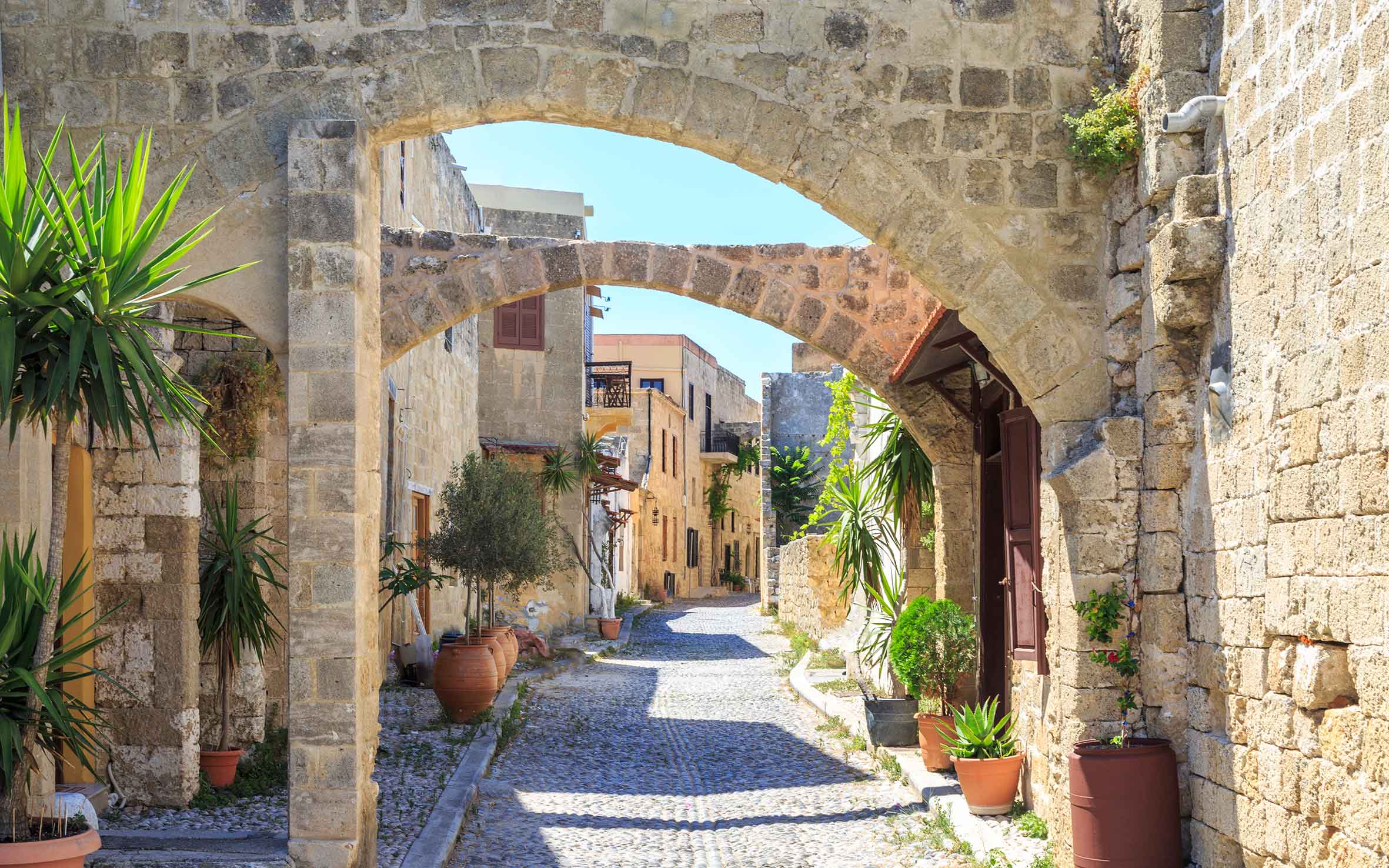
© Shutterstock
Rhodes, Dodecanese
Being an island at the crossroads of Europe, the Middle East, and Africa, Rhodes has been a melting pot of cultures since the Neolithic Period (6th millennium BC). After all those early settlers and conquerors, the Knights of St. John (Knights Hospitallers), the Ottomans and the Italians (1923-1947) left their indelible traces in the Old Town.
The Palace of the Grand Master of the Knights Hospitallers and the fortifications of the town, one of the few well-preserved examples of medieval architecture in Greece, the Suleymaniye Mosque, the La Yuderia quarter of the city, and the Palazzi and re-planning of the city that date from the Italian period are just some of the beauties you can find in the Old Town of the “Knight’s Island.”

© Shutterstock
Nymfaio, Western Macedonia
Although Nymfaio is not considered as a city or town but a village, we decided to include it for its traditional atmosphere. Thanks to careful yet extensive restoration, the village, built at an altitude of 1,350 meters below Mt Vernon and 70 km away from Florina, was historically one of the richest and most prosperous Vlach villages in Macedonia.
Aristocratic mansions with handmade furniture, the Nikeios School and other hidden gems around the cobblestone alleys, Nymfaio has the look and the feel of a fairytale village, especially when covered in snow. Nearby, the bear sanctuary of Arcturos completes the visit to this corner of Macedonia.

